Australia So Much to See
Copyright (C) 2013 AustraliaSoMuchtoSee.com. All reights reserved
Sources used for identification of wildflowers shown on these pages and regions where they occur see Credits
These pages will
feature some of the wildflowers we have photographed in Western Australia, and where possible, identified. If you
are able to help identify further flowers, or correct any I may have wrong, please contact us.
Information given for each species
will give botanical name, known common names, describe the flower, give time of year it flowered, and where it was photographed, and
the areas it occurs in. Names have been matched to Florabase which has also been used to show distribution.
See some of these wildflower
in larger sized photos on our Flickr pages.
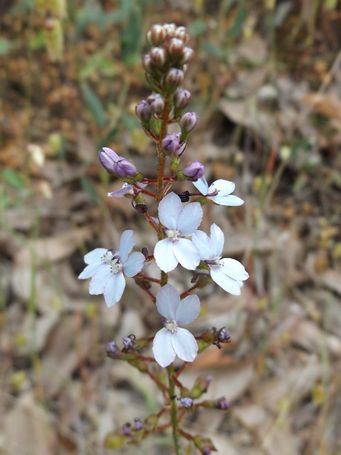
A lovely triggerplant with white to pale blue or lilac trigger plant flowers up a stem rising from a flat leafed base. As seen
below. A slightly serrated edge on the flower petals. Above right is like an albino, with no colouring at all, not even
on the tips of the throat appendages as on other pale and white variations.
October November
Bridgetown, South West region, Western
Australia and occurs throughout the south west corner of the state from north of Perth into the Wheatbelt to Bremer Bay in the
Great Southern.
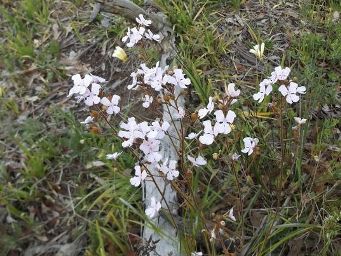
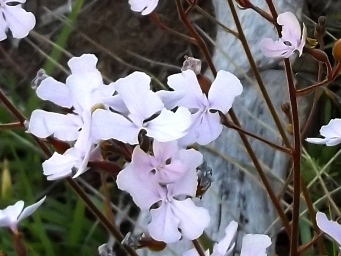
Stylidium affine, Queen Triggerplant
This pink Stylidium is the largest of the trigger plants with clusters of four petalled pale
pink flowers on upright stems. It can also occur with white flowers
September October
Photos from Dinninup and Mayanup (both in the
Boyup Brook Shire), South West region, Western Australia and occurs through the South West and into the adjacent Wheatbelt, including
around Perth
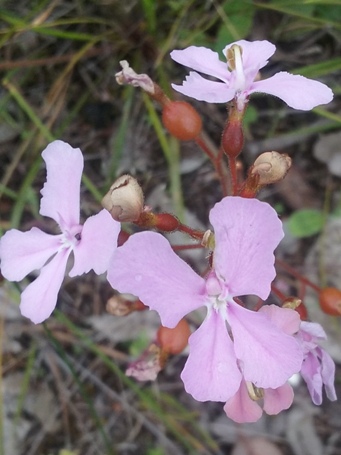
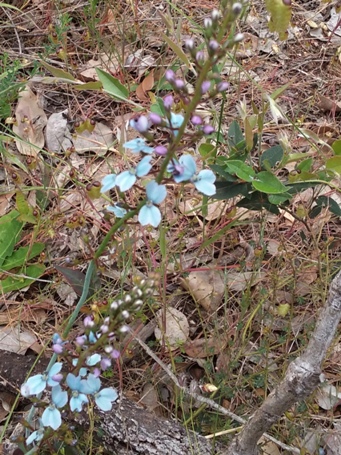
Stylidium, also known as Triggerplants are not the carnivorous plants popular opinion paints them as. The trigger mechanism
is merely to aid pollination.
The column typical of the genus Stylidium is sensitive and responds to touch. The change
in pressure when a pollinating insect lands on a Stylidium flower causes a physiological change in the column turgor pressure by way
of an action potential, sending the column quickly flying toward the insect.
Upon impact, the insect will be covered in pollen
and stunned, but not harmed. The response to touch is very quick in Stylidium species. The column can complete its "attack" on the
insect in as little as 15 milliseconds. After firing, the column resets to its original position in anywhere from a few minutes to
a half hour, depending on temperature and species-specific qualities. The column is able to fire many times before it no longer responds
to stimuli.
From Wikipedia
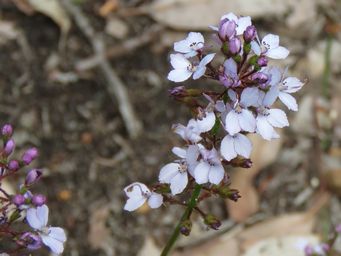
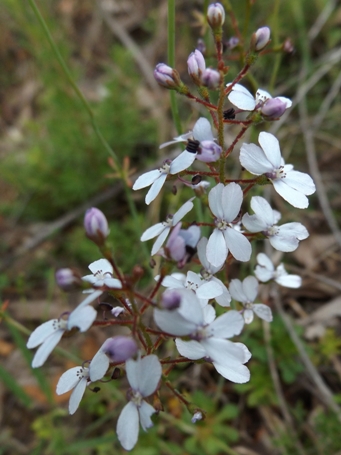
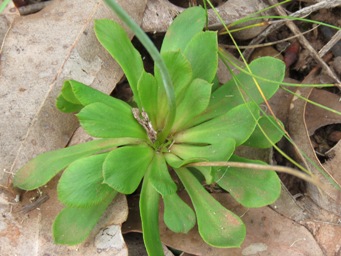
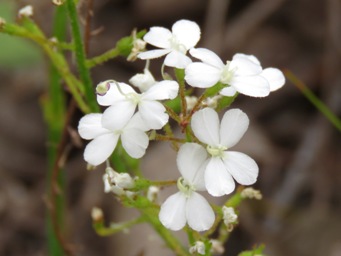
Stylidium amoenum (blue, lilac and white forms) Lovely Triggerplant, Jumping Jacks (above, at right and below)








